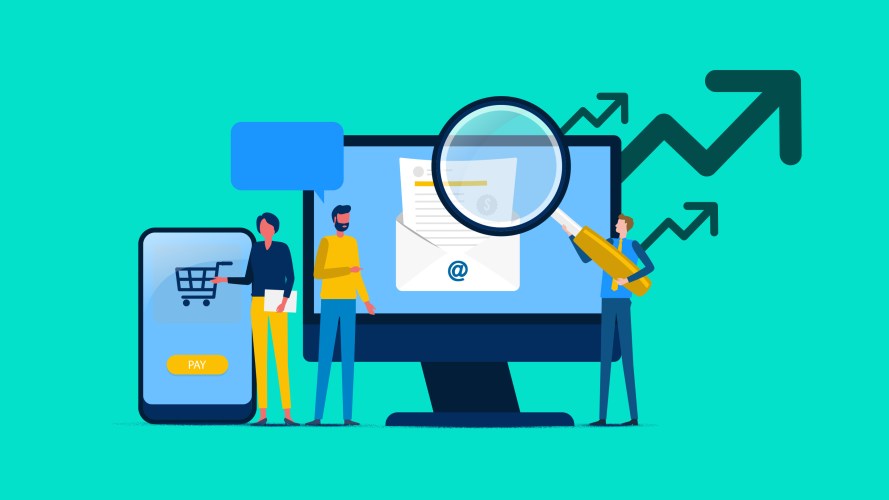We all know sales teams have to do more with less. We live in an era of tighter budgets and higher margins. It’s a tale as old as time: economic hardships force sellers to adapt their methods. That often means finding channel partners to expand your reach without adding headcount. But you can’t just find a channel partner and expect them to fly solo. For a new channel to be successful, you need an activation plan.
What you’ll learn:
- What is channel activation?
- Why is a channel activation plan important?
- 6 steps to building a channel activation plan
- Features to look for in sales channel activation software
Set partners up for success and win together
See how to give partners clear onboarding goals and automated business insights to grow faster, together.



What is channel activation?
Channel activation is a strategic process for engaging and empowering partners to sell your products and services. A channel partner is a third-party company such as a vendor, reseller, or agent that works with you to sell your your products. The goal is to drive partner performance with training, marketing collateral, and other support.
Why is a channel activation plan important?
When you decide to build a channel sales strategy, you need to set your partners up for success. A solid channel plan covers details about what support you offer to partners, how they will benefit, and the expectations you have. It helps you agree on shared goals and performance metrics, such as leads generated and total revenue brought in.
6 steps to building a channel activation plan
By following this step-by-step process, you can create a plan that grows revenue:
1. Determine your channels
Before diving into partnerships, your organization must decide which channels are right for your future goals. Common sales channels include VARs (Value-Add Resellers), social media, online ads, and e-commerce stores.
Review your company objectives. Are you looking to grow a certain type of revenue or add specific types of new customers? Think about how you can reach those goals with specific channels to help shape your plan. Channel partners can introduce your company to prospects that aren’t in your existing circle and help you scale up quickly.
2. Set the goal for revenue
You’ll need to dig into your data to set revenue goals. What’s the potential you can reach with each channel? For example, let’s say you are a small business that designs t-shirts. You don’t have a dedicated sales team, but you want to expand your reach. You know from past performance that your t-shirts sell well on social media, so you set a higher target on that channel. In contrast, you sell fewer pieces in local shops, so that target is lower.
3. Find the right partners
Once you know your goal, you can determine what types of partners you need to support it. Then, choose partners that fit that profile. If you’re not sure where to start, consider a Partner Relationship Management tool. A solid one can surface key details, such as industry niche, to help you create a buyer persona. For example, if you want to break into a new industry, you want to find partners that have credibility in that space. Or, if you want to improve customer experience after a sale, you’ll need partners that provide training and support.
4. Set up partner training
It’s important to remember that while your partners have industry experience, they might not know everything about your product. That’s why partner onboarding is so critical for successful channel activation. It also gives your new partners a taste of what it will be like to work with you. Don’t wait for them to ask for help. Instead, guide them through the onboarding with a step-by-step process. At a minimum, you’ll want to provide details on your brand, products, and pricing structures. Additionally, consider new skills your partner’s team may need to learn. Salesforce provides training for partners via Trailhead.
5. Create the right incentives
When your channel partner and their team are motivated by incentives, they will prioritize your products. This leads to higher revenue. Common incentives include financial payments and co-advertising. Many channel partners work with multiple companies, so you want to offer comparable incentives (if not better ones).
Start by understanding other companies’ incentives in addition to what specifically motivates this particular partner. For example, a newer company looking to gain recognition and credibility may value advertising and marketing incentives from a more established brand as much (or more) than financial incentives.
6. Measure and refine
Once the channel goes live, it’s important to measure its success. Sales analytics tools allow you to see the performance of the channel in real time. Based on analytics and metrics, you can then make changes to improve channel sales.
For example, what if your channel attracts a high volume of leads but has a low conversion rate? You may need to provide additional training to channel partners on your products’ business benefits.
Salesforce makes it easy to deliver revenue growth by tracking revenue against goals.
Join the Salesblazer movement
We’re building the largest and most successful community of sales professionals, so you can learn, connect, and grow.

Features to look for in sales channel activation software
The right software, such as Salesforce’s Partnership Relationship Management product, can significantly improve the channel process and results. Here are four things to look for when purchasing sales channel activation software:
AI-powered channel management
With AI-generated emails and prompts built into your partner software, you can quickly draft personalized communication and gather key insights that help you improve sales efforts. You can also see what is happening at a glance on partner deals with channel recaps and thread summaries in Slack Connect with Slack AI. When it’s time to collaborate with a partner on a deal, you can automate the workflow with PRM for Slack.
Partner insights through AI
AI provides self-service to partners and quick access (via any device) to the knowledge they need. Many organizations start with generative-AI–powered search using existing knowledge bases to provide answers to frequently asked questions. You can then add AI-powered chatbots to provide additional support. If a partner needs more assistance, the chatbot can use AI to route cases to the right agent.
CRM integration
For best results, your sales channel activation software should integrate into both your organization’s and your channel partner’s CRM.
The future of channel activation
Right now, sales channel activation is primarily used when unlocking new segments, regions, and product categories. However, as customers become more sophisticated and perform more independent research, channel partners will likely become the de facto way to buy solutions.
Customers who already have a relationship with a channel partner will buy all their solutions from a single company instead of managing multiple relationships and accounts. With AI swiftly evolving, selling via sales channel partners will be even more important.
Grow revenue by empowering your partners
Grow with better partner tools and exceed revenue targets together — with Partner Relationship Management.































